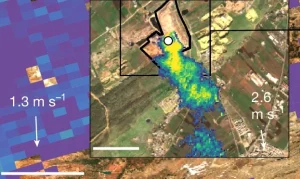Tunisia’s beaches are being swept away at alarming rate

On the face of it, a crisis facing Tunisia’s beaches could be seen simply as a logistical challenge, given that sand from the desert can be trucked and dumped on beaches which have been eroded, due to climate change and poor governance.
But it’s more complicated than that.
Like many other coastal areas in North Africa, severe erosion has led to many of Hammamet’s sandy beaches vanishing in recent years, taking a toll on the holiday hotspot about 65 kilometers (40 miles) east of the capital Tunis, according to AFP on July 23rd.
Coastlines across the world are in a constant natural flux, with the seas claiming and depositing sediment.
But human activity, including coastal property development and offshore sand mining, significantly accelerates beach erosion.
By contrast, development actually prevents the natural shift of sands along the coastline which also is part of the problem.
Studies have also shown the impacts of climate change, including rising temperatures and sea levels, exacerbate the phenomenon.
In the Mediterranean, where the British National Oceanography Center says sea levels have risen at a higher rate over the past 20 years than the entirety of the 20th century, shorelines are changing rapidly.
The sea is also warming 20 percent faster than the rest of the world, according to the United Nations.
Tunisia’s coastline has been a major asset for the Mediterranean country with a struggling economy, as it aims to host some 10 million tourists this year.
READ: Tunisia asks EU for financial aid for migration crisis
Tourism accounts for up to 14 percent of the country’s GDP, providing tens of thousands of jobs in a country where unemployment tops 16 percent and 40 percent among young people.
Tunisia has already lost more than 90 kilometers of beaches to erosion, according to official figures from last year.
Of the country’s 570 kilometers of sandy beaches suitable for swimming, 190 kilometers are at imminent risk of disappearing, according to Tunisian reports.
A majority of the beaches most affected by erosion are located near cities.
Tunisia’s environmental groups, as well as the government’s Coastal Protection and Development Agency (APAL), blame the rapid erosion mostly on human activity and construction on the coast, which they say is further aggravated by climate change.
“Construction projects have not been designed to respect coastal dynamics,” an APAL official told AFP.
To save the Hammamet beach, one of Tunisia’s worst-affected according to the World Bank, authorities last month began trucking in around 750 lorry loads filled with sand from the inland desert province of Kairouan, about 110 kilometers away.
READ: Tunisia: Opposition party leader arrested ahead of elections
“This beach is the postcard image of Hammamet,” said environmentalist Chiheb Ben Fredj peering nostalgically at the town’s iconic Yasmine beach.
“It has been seared in our minds since our childhood,” he added, as laborers worked to restore the central Tunisian waterfront to its former sandy glory.
But while the rebuilding of beaches, known as beach nourishment, may be a quick fix, “it’s not a sustainable solution,” said Ben Fredj.
“This sand may not last long,” added the secretary general of the Environmental Education Association.
“It can be swallowed in a few days in the event of a storm,” he said, as was the case in the summer of 2023.

The process can also prove expensive.
Coastal authorities estimated the cost of restoring sand to three beaches in Hammamet, Monastir and Sfax at 3.9 million Tunisian dinars ($1.25 million).
But for locals, restoring their priceless seafront is worth the money.
The Yasmine beach “is a showcase for Hammamet,” said Narjess Bouasker, who runs the town’s Menara hotel and leads the regional hotel federation.
“We must take back our beach that the sea has swallowed,” she said, calling for a balance between safeguarding the landscape, cherished by locals and foreign visitors alike, and fighting coastal erosion.
“For us, the priority is not to touch the beauty of the city,” she told AFP.
Bouasker said she has seen increasing awareness among authorities, but refilling beaches with sand is still a gamble.
“We don’t know how the sea will react,” she added.
AFP
Want to chase the pulse of North Africa?
Subscribe to receive our FREE weekly PDF magazine










